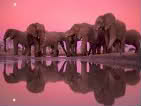The Vikings Discover America, ca. 1000
2 posters
Page 1 of 1
 Re: The Vikings Discover America, ca. 1000
Re: The Vikings Discover America, ca. 1000
Hi Rainyday! Thanks for posting that. I just learned that I got some Nordics as ancestors.
So in honor of the Vikings and of course the Gauls and other heritages........
www.atlantisinsights.net...
Atlantis in the Caribbean
The Palace of Night.
Voyage to America circa 700 a.d.
http://xrl.us/bhv2ps
Ancient America
http://www.users.on.net/~mkfenn/page9.htm
http://www.abovetopsecret.com/forum/thread390943/pg1
http://www.abovetopsecret.com/forum/single/5037489.html
MAYA STORY OF ESCAPE FROM ATLANTIS
http://www.goldenageproject.org.uk/22escapefromatlantis.php
Basque Birds etc pg 172+
http://xrl.us/bhv2pw
The neolithic Goddess of Old Europe preserved in a non-Indo-European setting
http://www.evertype.com/misc/basque-jies/basque-jies.html
Lost cities of Atlantis, ancient Europe & the Mediterranean
By David Hatcher Childress
http://xrl.us/bhv2py
Viking Series
http://www.gudrunpublishing.com/vikingseries.html
So in honor of the Vikings and of course the Gauls and other heritages........
While observing and studying a group of linguistically interrelated Indian tribes along the Amazon River, archaeologist Marcel Homet learned that their common language, Tupi-Guarani, contains idioms that are strikingly similar to the Basque language. Edgar Cayce says the ancestors of the Basques were Atlanteans who moved to the Pyrenees Mountains of southwestern Europe. (Reading 990-1.)
www.atlantisinsights.net...
Atlantis in the Caribbean
http://www.abovetopsecret.com/forum/thread404397/pg1The striking similarities in the Pre-Classic Olmec bas-relief at Chalcatzingo and the Basque Mari-Sugaar legend give supporting evidence that there may have been a lost civilization that connected these people together. I’ve never studied the prophecies of Cayce but I’m beginning to believe he had some things right. I think he was compelled to give half-truths and this was probably on purpose.
The Palace of Night.
Musa: “A serpent woman?”
Varus: “Come and see.”
This is the title of a chapter in the novel ATLA, written by Mrs. J. G. Smith published in 1886. This novel was published four years after Ignatius Donnelly released his book Atlantis: The Antediluvian World. The subject of this chapter relates to the thread at hand. The novel takes place in the land of Atlan and the chapter describes the sacred place to which no common Atlantean tread. At the base of a volcanic mountain there dwells a Sorceress named Kirtyah who lives in solitude in a cave under a mountain. The cave proves to be a great palace hewn from the bedrock. The palace is also home to another living being. This creature is a yellow asp of great size and age, whose name is Lucksor. At the center of this chamber there is a revolving wheel glowing with phosphorescent light.
A wheel image on the spine of Ignatius Donnelly’s book.
The pre-Christian mythology of the Basque people of Northern Spain mentions a sacred woman by the name of Mari. This woman would enter into a cave somewhere on a high mountain. There she would meet with her consort named Sugaar. When they were together they would produce storms and when they traveled together the storms would produce hail. Basque legends describe Sugaar as either a fire-sickle, a fire ball or even a two horned serpent.
Modern rendering of Mari by Josu Goni.
Modern rendering of Sugaar as a serpent in the lauburu by Josu Goni.
Mount Anboto in Biscay, Spain. The supposed location of Mari’s cave.
(I'll have to dig up pics and shorten links, had to put them together. Really I'm going to learn how cuz it looks a mess)This Basque legend is of great interest because it is similar to one of the primary bas-reliefs of Chalcatzingo, a pre-classic Olmec site. The Olmecs are believed to have had their start around 1500 B.C. and then reached their apogee between 700 and 500 B.C. This site is located at the foot of three 1,000-foot volcanic cones and is considered sacred by the Aztecs as well as other ancient peoples. Monument 1, El Ray, depicts a man or woman sitting in a cave. Above the image of the cave are three clouds which are releasing rain. Sitting on top of the cave dwells a ball of fire with a St. Andrew's Cross at its center. The most prominent feature of this bas-relief is the energy explosion coming out of the mouth of the cave. Monument 5 is of interest as well because it is a bas-relief of a large two horned serpent devouring a man. This image is also shown with the St. Andrew’s Cross.
Chalcatzingo. The location of the Pre-Classic Olmec bas-reliefs.
Sketching of Monument 1, El Ray, at Chalcatzingo.
Actual photo of Monument 1 showing El Ray seated on a throne.
Linguistic Similarities between the Algonquin and the CeltsThe current understanding of the Olmec “!” is thought to be rain. However, if the Basque mythology is a true comparison then the “!” symbol is really hail. When Mari and Sugaar travel together the clouds produce hail. The explosive emitting energy coming out of the cave could also denote movement. Then we see Sugaar sitting on top of the cave in the form of a fire ball. Sugaar is taking a ride with the moving cave. With monument 5 Sugaar is in the form of a two horned serpent. I believe the St. Andrew’s Cross is identified with Sugaar and sometimes denotes death.
Most people age 30+ remember being taught in school that the first people to cross the Atlantic lived around the time of Columbus. Only recently this belief had to be revised when evidence for Vikings having crossed the Atlantic hundreds of years earlier came up. Schoolbooks were then re-written to say the Vikings were "the first" to cross the Atlantic. They should have said "probably" the first or "maybe" the first though. There is evidence that there was earlier trans-atlantic contact...the following being only one small piece of a growing number of indicators.
There are language similarities between the Algonquin and ancient Celtic and Gaelic. Some go further to take this not only of evidence of ancient trans-atlantic contact, but of common ancient roots of the Irish and the Native Americans (in the sense of Diffusionist or Atlantis-Theory).
The Algonquins (or Algonkins) are an aboriginal North American people. ...Algonquian-speaking peoples stretch from Virginia to the Rocky Mountains and north to Hudson Bay According to the oral history of the Anishinaabeg, they originally lived on the shores of the "Great Salt Water" (presumably the Atlantic Ocean near the Gulf of St. Lawrence). They were instructed by seven prophets to follow a sacred miigis shell (whiteshell) toward the west
Modern Gaelic preserves many spelled letters that are no longer pronounced, but when pronounced in the ancient Gaulish or ancestral tongue of the Celts and Basques, one finds a striking similarity to the Algonquian language.
For example; the Algonquian word for ‘one who takes small fish' is Amoskeag. In Gaelic Ammo-iasgag means ‘small fish stream'. In Algonquian Ammonoosuc means ‘small fishing river' and in Gaelic, Am-min-a-sugh means; ‘small river for taking out fish'. In Algonquian Coos and cohas mean ‘pine tree' and in Gaelic, ghiuthas means ‘pine tree'. Merrimack River in Algonquian means ‘deep fishing'. In Gaelic Mor-riomach means ‘of great depth'. Kaskaashadi another Algonquian name for the Merrimack River sounds similar to Guisgesiadi, which in Gaelic means ‘slow flowing waters' Nashaway River in Algonquian means ‘land between' and in Gaelic naisguir means ‘land connecting'. Piscataqua River means ‘white stone' and in Gaelic, Pioscatacua means ‘pieces of snow white stone'. Seminenal River means ‘grains of rock', which in Gaelic is; semenaill Quechee matches the Gaelic work Quithe meaning pit or chasm. Ottauquechee River flows through a 162 feet deep gorge is similar to the Gaelic word Otha-Cuithe which means; ‘waters of the gorge'. Cabassauk River in Algonquian means place of Sturgeon. The Sturgeon fish have unfortunately fallen victim to environmental degradation. Similar to Gaelic Cabach-sugh. Attilah means blueberries and in Gaelic Aiteal means juniper berries. Munt means people and in Gaelic muintear means people. Monad means mountain and in Gaelic monadh means mountain. The suffix - nock is used in New England to denote hills and mountains. Cnoc in Gaelic means hill or rocky outcrop. Wadjak means on top, in Gaelic the word is uachdar. Monomonock Lake means 'island lookout place' and in Gaelic Moine-managh-ach 'means boggy lookout place'. Pontanipo Pond means cold water and in Gaelic Punntaine-pol means ‘numbingly cold pool' Natukko means cleared place (land) and in Gaelic Neo-tugha means not covered (by vegetation). Asquam Lake means ‘pleasant watering place' and in Gaelic Uisge-amail means ‘seasonable waters'.
These names which have stuck, through many changes over the past 300 years, are not names left by Bronze Age European traders who have sporadicly visitored America. These are names given to these places by the indigenous Amerindians. As the Gaelic language is unrelated to any Indo-European languages, this can mean only one thing - that the Gaelic language was the original mother tongue of many Amerindians. It stands to reason that anyone speaking Gaelic related languages in Europe were originally from America. The native name of Brittany in France is Armorica, another big hint as to their origins.
Unfortunately the celtic-algonquin connection is used by some to justify racist ideologies such as "The Celts brought language to the savage Injuns". A small hint of this theory can be found here:
Gaelic & Algonquin similarities
but there are much more racist websites out there endorsing the connection. Because of the misuse of this knowledge for racist ideology, most of academia dismisses the whole field of research.
Conviniently the pseudoskeptics opposing this idea can than call anyone proposing trans-atlantic contact prior to Columbus and the Vikings a "racist" - as witnessed on this discussion board many times. However, acknowledging that the languages have common roots or met each other at some points in history has nothing at all to do with racism.
Instead it points to common roots of the two languages (a native american one and Irish as it was spoken around the year 800) which remain unexplained.
Voyage to America circa 700 a.d.
http://xrl.us/bhv2ps
Ancient America
http://www.users.on.net/~mkfenn/page9.htm
http://www.abovetopsecret.com/forum/thread390943/pg1
http://www.abovetopsecret.com/forum/single/5037489.html
MAYA STORY OF ESCAPE FROM ATLANTIS
http://www.goldenageproject.org.uk/22escapefromatlantis.php
Basque Birds etc pg 172+
http://xrl.us/bhv2pw
The neolithic Goddess of Old Europe preserved in a non-Indo-European setting
http://www.evertype.com/misc/basque-jies/basque-jies.html
Lost cities of Atlantis, ancient Europe & the Mediterranean
By David Hatcher Childress
http://xrl.us/bhv2py
Viking Series
http://www.gudrunpublishing.com/vikingseries.html

seraphim- Posts : 1180
Join date : 2009-11-18
 Re: The Vikings Discover America, ca. 1000
Re: The Vikings Discover America, ca. 1000
This happened thousands of years ago.........about the Scandanavian lineage.
http://nazarenebloodline7777.blogspot.com/2009_03_01_archive.html
http://www.crystalinks.com/dilmun.html
http://midgleywebpages.com/dna.html
http://www.grailcode.net/
http://morgellonsgroup.proboards.com/index.cgi?board=alter&action=display&thread=609&page=2
http://nazarenebloodline7777.blogspot.com/2009_03_01_archive.html
WHO WERE THE ORIGINAL BASQUE’S?Monday, March 2, 2009 WHAT DOES THE TRIBE OF DAN HAVE TO DO WITH THE LANGUEDOC REGION OF FRANCE AND THE BASQUE REGION OF SPAIN?When archeologists dig up old mummies and skeletons all over the world the most astounding find they make is that the oldest skeletons they find are of Scandinavian decent. These people had one thing in common they were blondes.
This indicates that our original prehistoric ancestors were Scandinavians. Right now most of you who are not Scandinavians are probably saying; “She’s just trying to promote the Scandinavian view point,” which is not the case. What I am saying is that ALL OF OUR PREHISTORIC ANCESTORS WERE SCANDINAVIAN. It doesn’t matter who you are today. Your DNA tracks back to Hyperborea and your prehistoric ancestors were Scandinavia. I don’t care if you are black as night or are an Indian, your ancestors were originally Scandinavian.LET’S START HEREIn Iraq or ancient Sumer (Babylon) for an example, we have now learned that those people living in the area were a race of Scandinavian people, who occupied the area when the evil Anunnaki gods (evil demonic reptilian entities)
http://www.crystalinks.com/dilmun.html
http://midgleywebpages.com/dna.html
http://www.grailcode.net/
http://morgellonsgroup.proboards.com/index.cgi?board=alter&action=display&thread=609&page=2

seraphim- Posts : 1180
Join date : 2009-11-18
Page 1 of 1
Permissions in this forum:
You cannot reply to topics in this forum